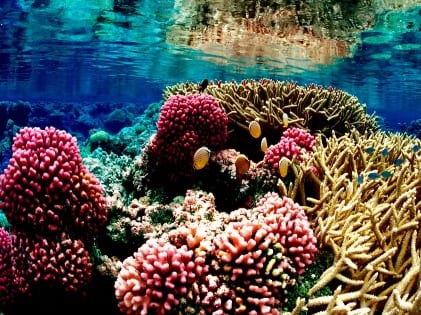 This year and the last has been full of some fantastic research that is changing the way we live life! The many wonders of nature, the traces from the first inhabitants, to the electric eels are some scientific breakthroughs that caught our fancy! It fills us with wonderment, and thank God for Science!
This year and the last has been full of some fantastic research that is changing the way we live life! The many wonders of nature, the traces from the first inhabitants, to the electric eels are some scientific breakthroughs that caught our fancy! It fills us with wonderment, and thank God for Science!
Climate Change
Human activities can cause a massive change in the natural environment. But there is more to the truth than we knew. A team of scientists recently found out that large-scale environmental change started much earlier than we would like to believe. A group of 100 archaeologists and Smithsonian scientists, Torben Rick and Daniel Rogers, found that climate change activities began over three thousand years ago. So, it is not just modern humans, but the hunter-gatherers, farmers, pastoralists were impacting the planet too. It isn’t a recent phenomenon at all.
The Electric Eels!
 Research in the Amazon basin found two new species of electric eels. While globalization has been wreaking havoc on the planet and natural resources, the presence of two new animal species is a happy development. However, it is not all rosy and nice. Scientists believe that Electrophorus voltaic, one of the two eel species, can discharge around 860 volts of electricity. And that makes it one of the strongest bioelectric generator. We wonder what more wonders nature holds in store for us!
Research in the Amazon basin found two new species of electric eels. While globalization has been wreaking havoc on the planet and natural resources, the presence of two new animal species is a happy development. However, it is not all rosy and nice. Scientists believe that Electrophorus voltaic, one of the two eel species, can discharge around 860 volts of electricity. And that makes it one of the strongest bioelectric generator. We wonder what more wonders nature holds in store for us!
The Meteorite That Made Dinosaurs Go Extinct

Brian Huber, a Smithsonian paleontologist, is a researcher on foraminifera, or small single-celled organisms. These are small floating planktonic species that have information on the meteorite that could have made dinosaurs extinct. Besides that, they might also provide an understanding of what changed the oceans.
A study published in the Proceedings of the National Academy of Sciences proves how it not only killed the nonavian dinosaurs but left an impact on the ocean chemistry too. These findings were done using the boron isotopes. They found out that the ocean acidified because of the increase in the levels of carbon dioxide in the atmosphere.
The World After Dinosaurs Went Extinct
Fossilized fern found at Colorado gave scientists a look into what life was like after the death of dinosaurs. It is said terrestrial life thrived after dinosaurs went extinct. Yes, that is scary, but this discovery by the Museum of National History is interesting. Paleontologists Richard Barclay and Gussie Mracken are the ones who found the terrestrial life thrived about sixty-six million years ago.
The research team studied a site in Colorado where complete fossils of mammals, reptiles, and plants had been found. After almost 100,000 years after the dinosaurs extinction event, the diversity of mammals doubled, and the body size magnified to pre-extinction levels. Yes, mammals grew, but why they grew is not something we are aware of yet. Scientists believe that new plants, along with mammals, played a significant role in fueling the growth. It just goes to show how resilient life is!
The Beaked Whale!
 The skull of a beaked whale, Berardius minimus, was discovered by James Mead, a Smithsonian scientist James Mead. However, a whale is the largest animal. Yet it may escape the hawk eyes of Science. Japanese whalers always suspected that there was more than one kind of Baird’s beaked whales. They were not wrong. According to the Scientific Reports, a group of researchers, including James Mead, discovered a brand new species of beaked whales. The new species is known as the Berardius minimus. They are slightly different from the original Berardius bardii as it is smaller with a shorter beak, and the color is black.
The skull of a beaked whale, Berardius minimus, was discovered by James Mead, a Smithsonian scientist James Mead. However, a whale is the largest animal. Yet it may escape the hawk eyes of Science. Japanese whalers always suspected that there was more than one kind of Baird’s beaked whales. They were not wrong. According to the Scientific Reports, a group of researchers, including James Mead, discovered a brand new species of beaked whales. The new species is known as the Berardius minimus. They are slightly different from the original Berardius bardii as it is smaller with a shorter beak, and the color is black.
The Darwinian Paradox
 Charles Darwin had this question of how coral reefs can thrive in the nutrient-deficient waters? It was a puzzle that came to be called Darwin’s Paradox. Now, after a good two hundred years, Smithsonian ichthyologist Carole Baldwin along with a team of scientists, may have found the missing pieces of the jigsaw puzzle. The larvae of the small pieces that live close to the sea bed, also known as the cryptobenthic fishes, could provide the food and add to the diversity of the coral reefs.
Charles Darwin had this question of how coral reefs can thrive in the nutrient-deficient waters? It was a puzzle that came to be called Darwin’s Paradox. Now, after a good two hundred years, Smithsonian ichthyologist Carole Baldwin along with a team of scientists, may have found the missing pieces of the jigsaw puzzle. The larvae of the small pieces that live close to the sea bed, also known as the cryptobenthic fishes, could provide the food and add to the diversity of the coral reefs.
Isn’t it amazing how little we know of the world around us? It is as scary as it is exciting! Here’s more to such exciting and novel discoveries in the future.




